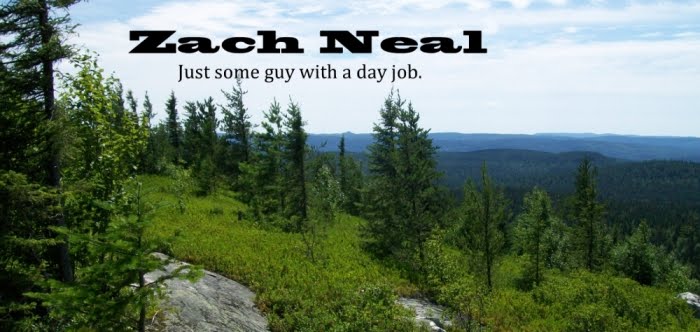 |
| Wild and beautiful. |
Kioshkokwi Lake lies on the Amable Du Fond River, one of
half a dozen major watersheds draining the Algonquin dome. The river goes north
to the Mattawa River, and hence to the Ottawa. This part of the Du Fond is
navigable by canoes and kayaks.
The Du Fond brothers, Francis and Ignace, operated a depot
farm at the east end of Manitou Lake in the 1880’s. Now it’s just a grassy
clearing, with a few clumps of trees, and the trail going through. It is
historic country, in the ancient homeland of the Nipissings, a nation of the
Algonquian linguistic stock.
Kioshkokwi means “Lake of many gulls.” The plaintive cries
of the birds, glowing white dots on the calm glassy expanse of the water, can
be haunting indeed. They can be seen and heard for miles. My brother and I set
out at dawn on a foggy morning. The dark pines became ghostly shapes in the
mist. They rapidly disappeared, yet up is up and down is down, in the weird
half-light of early morning. With the compass to guide us, it was windless, the
water dark and quiet. It was the start of another warm and humid summer’s day. In
the centre of the lake, the sky cleared. Looking back, a billowing mass of
white cotton shrouded the shore, a blanket of trees hugging the soft curves of the
earth mother.
It looked like the nap of an old, much washed sweater; and
it was good.
After an unsuccessful search for the ruins of an old ranger
cabin on Wolfe Bay, we turned our prow southeast, rounding the west end of the
lake, setting up for the southwest run to the river mouth. We hiked up and
looked at the waterfall, and talked for a while with some people up there.
We found a campsite back on Wolfe Bay. Next morning, we set
out for the northeast corner of the lake. That little bay has a couple of
islands. We grabbed the southernmost one. This island was not large, but
shallows dotted with sandy patches and clumps of grass, and the nearby
shoreline; meant firewood was nearby. A short, easy canoe ride after dinner
usually takes care of all our firewood needs. On the “front” of the island, a
nice sandy beach, probably fifty metres long.
A holiday, we watched canoe parties go by as the day wore
on. They were coming from two directions—some people came out of Lauder Lake,
and parties were obviously coming up from the portage at Mink Lake, going home
after the long weekend.
They headed for the boat launch and store on Kioshkokwi’s
north side. By ten o’clock on that August night, it became very quiet. In the
old days, we used to sit with our rum-laced coffee and listen. The tracks are
gone now, but it was quite a thrill to hear a train coming up the valley. In
the distance, the vague suggestion of a noise, more felt than heard.
A faint glimmer on a hillside, then another hillside lit up.
As the train made its way, the blast of its horn, the rumble of its wheels were
amplified, reflected by sheer rock faces and the parabolic curves of the
cuttings it ran in. You could hear it fifteen kilometres away. And then as the
ground quivered and shook under your butts, the pounding, shuffling monster
would light up half the lake as it went by, thudding and roaring and making
sparks fly from its wheels.
It gets real quiet after the train goes by, then the forest
lets out its breath and the normal routine begins anew. We heard something die
out there that night. We had no idea what it was. Perhaps a rabbit caught by a
skulking, silent flying owl, maybe a beaver surprised in the act of
tree-cutting by a bobcat, who knows? It sure makes the hair stand up on the
back of the neck, sure makes the old goose pimples rise on arms and legs.
Makes you think. Animals are truly innocent of any guilt or
sin. Life is such a fragile, and therefore precious thing. It is always a
tragedy to die.
At some point the wolves began to howl.
“Holy crap! What the heck is that?” asked my brother,
round-eyed in wonder.
The weirdest, un-holiest, loneliest, most mournful sound you
ever want to hear.
 |
| Mariomassone, Denali NPS. |
“That’s just the moose,” I told him. “They get a little
uptight. Another month or so and the rut begins. They call out to each other,
let each other know whose turf it is.”
He accepted my explanation, and after swallowing the dregs
of his coffee, went to bed. I like the sound of wolves, and have no real fear
of them. Bears are so much more silent, don’t you agree? Much more unpredictable.
A wolf won’t eat out of a garbage dump. It doesn’t smell good, to a wolf. Bears
are omnivorous, the wolf is a pure carnivore. They might nibble grass, the
vegetable portion of their diet comes exclusively from the stomach contents of
their quarry. An animal of the chase, creatures of the pack.
Letting the fire die down, I laid there quietly on my little
tarp. A clear, starry night.
I listened for a long time to the snoring of my brother, and
the calls of the wolves of Kioshkokw, for they are also our brothers.
End






